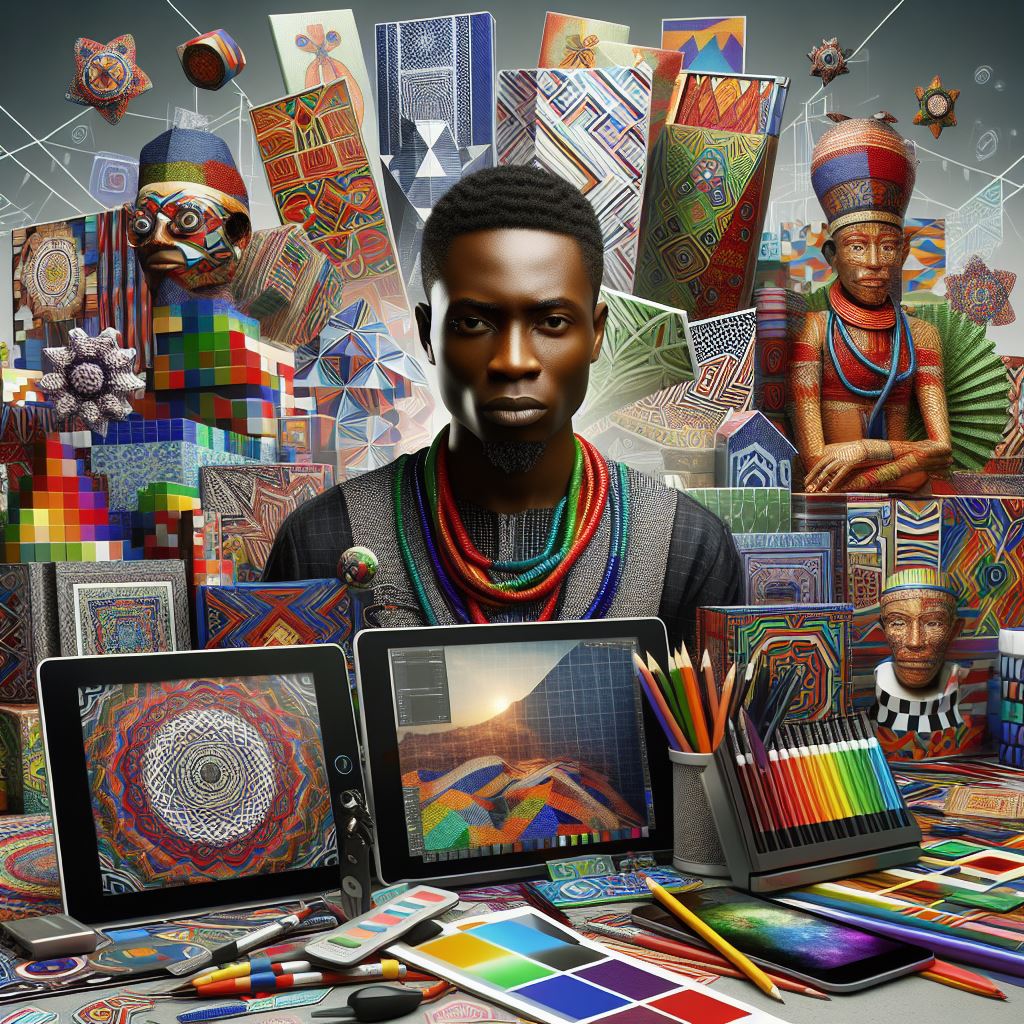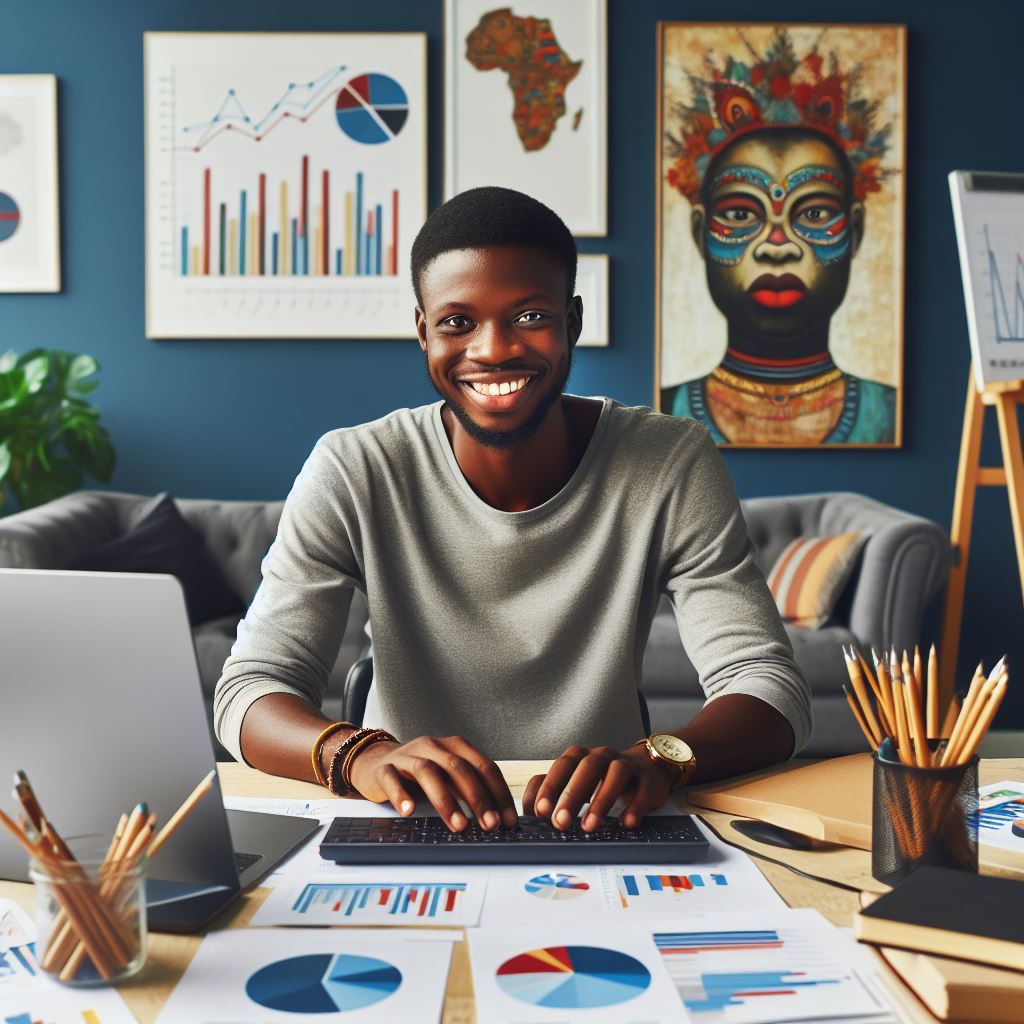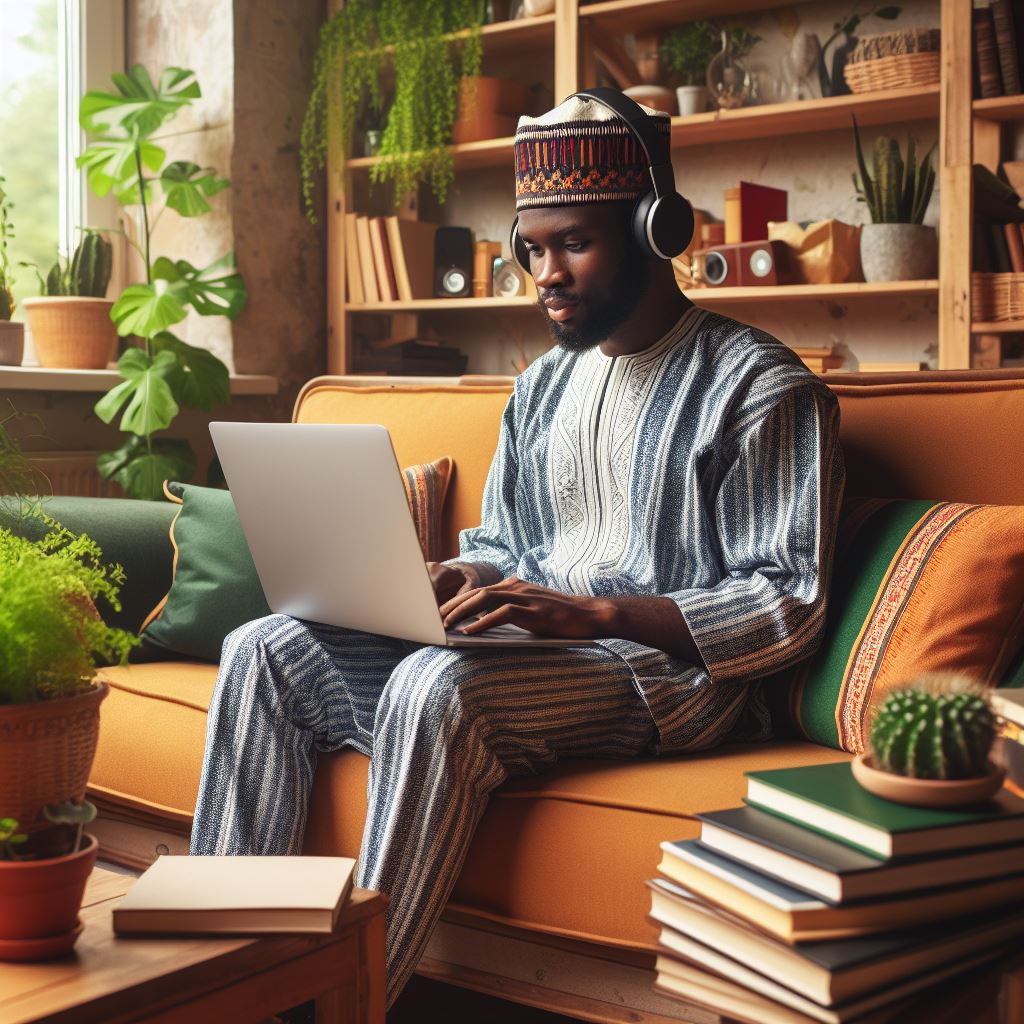Introduction
Digital art is the creation of artistic works using digital technology, gaining immense popularity in recent years.
Enhancing skills in digital art is crucial for achieving success in this field.
Digital art encompasses the creation of visual artworks using digital mediums such as computers, software, and electronic devices.
With technological advancement, digital art has gained significant recognition and a thriving community of digital artists.
The growing popularity of digital art can be attributed to its accessibility and versatility.
Artists no longer require traditional tools or physical media, which can be expensive and time-consuming.
Digital platforms allow artists to create and share their work easily, reaching a wider audience.
Improving skills in digital art is essential for artists who want to push boundaries and stand out in the digital art scene.
With increased skill, artists can create more intricate and engaging visuals, experiment with different techniques, and develop a unique style.
Investing time and effort into learning new digital art techniques and tools is beneficial in this rapidly evolving field.
Continuous improvement helps artists keep up with emerging trends, refine their work, and expand their creative possibilities.
Moreover, honing digital art skills enables artists to effectively communicate their ideas and emotions through visual storytelling.
It allows artists to explore novel ways of expressing themselves, pushing the boundaries of imagination.
In a nutshell, digital art has experienced tremendous growth and popularity.
Enhancing skills in this field is crucial for artists aiming to excel and make a mark in the digital art community.
By embracing new techniques and continuously improving, artists can unleash their true creative potential and take their digital art game to new heights.
Exploring Different Digital Art Tools
Overview of popular digital art tools (Adobe Photoshop, Procreate, Corel Painter, etc.)
- Adobe Photoshop: The industry-standard software for digital art with a wide range of features.
- Procreate: A powerful and intuitive app designed specifically for iPad, ideal for painting and sketching.
- Corel Painter: Offers realistic brushes and textures, allowing artists to emulate traditional art techniques.
Features and functionalities
Adobe Photoshop boasts advanced layers, masks, and filters, enabling artists to manipulate images with precision. It also provides extensive customization options for brushes and a vast array of artistic tools.
Procreate offers a seamless and immersive drawing experience, with an extensive brush library and an intuitive UI. Artists can easily create custom brushes and export their artworks in high resolution.
Corel Painter stands out for its ability to emulate traditional art techniques. It provides an impressive range of brushes and textures, allowing artists to achieve realistic and textured effects in their digital creations.
Tips for selecting the right tool based on personal preference and artistic style
- Consider skill level: Beginners may find Procreate more user-friendly, whereas experienced artists may appreciate Photoshop’s advanced features.
- Artistic style: Corel Painter is an excellent choice for artists aiming to replicate traditional mediums in their digital works.
- Budget: While Adobe Photoshop and Corel Painter require a subscription or one-time purchase, Procreate offers a fixed price with frequent updates.
- Hardware compatibility: Ensure your chosen software is compatible with your specific device and operating system.
- Workflow preferences: Some artists prefer the seamless integration between Adobe Photoshop and other Adobe Creative Cloud apps.
Ultimately, the choice of digital art tool depends on personal preference, artistic style, budget, and the preferred workflow.
Artists should explore different tools, experiment, and find what suits their needs and creative vision.
Read: Instagram Marketing for Beginners
Mastering Digital Drawing Techniques
Importance of understanding composition, perspective, and lighting in digital art
Mastering the art of digital illustration entails a comprehensive grasp of crucial elements such as composition, perspective, and lighting, essential for creating impactful and visually captivating artworks.
In the realm of digital sketching, continual practice and exploration significantly contribute to the refinement of overall drawing skills.
The expansive toolkit provided by digital platforms empowers artists to experiment freely, fostering an environment where mistakes are correctable and creativity is boundless.
When delving into the realms of shading and coloring, the digital realm presents a vast array of techniques.
Artists can leverage gradient tools, blending modes, and layer styles to imbue their creations with depth and dimension.
Understanding how to manipulate digital tools to produce realistic shadows, highlights, and textures opens up a realm of possibilities, allowing artists to breathe life into their digital canvases.
The foundational concepts of composition, encompassing the strategic arrangement of visual elements, play a pivotal role in guiding the viewer’s gaze and effectively conveying the intended message.
Similarly, mastering perspective is indispensable for infusing a sense of depth and spatial awareness into digital artworks.
This becomes particularly crucial when portraying landscapes, architectural structures, or objects with intricate spatial planes.
Lighting, a cornerstone of visual art, assumes a vital role in setting the mood, enhancing details, and generating visual interest.
The digital artist’s understanding of how light interacts with diverse surfaces is key to adding realism and dimensionality to their creations.
Experimentation with various lighting techniques, ranging from the subtlety of chiaroscuro to the drama of focused lighting, allows artists to inject vitality into their digital compositions.
Read: Nigerian Vloggers: Grow Fast!
Enhancing Digital Painting Skills
In order to up your digital art game, it is important to observe and study real-life objects and nature.
Importance of observing and studying real-life objects and nature
- Observing real-life objects and nature helps you understand their form, texture, and colors.
- Studying these elements will improve your ability to depict them realistically in your digital paintings.
- By observing real-life objects and nature, you can also develop your own unique style and perspective.
Creating realistic digital paintings requires a combination of technical skills and artistic vision. Here are some tips to help you achieve realistic results:
Tips for creating realistic digital paintings
- Start by sketching your composition and planning the overall design before diving into the details.
- Pay attention to light and shadow – this will add depth and dimension to your digital paintings.
- Use a wide range of brush styles and effects to create different textures and details.
- Experiment with different brush sizes, opacities, and blending modes to achieve the desired effects.
- Take your time and be patient – creating realistic digital paintings can be a time-consuming process.
Exploring different brush styles and effects can greatly enhance the quality of your digital paintings.
Different brush styles and effects
- Try using brushes with different shapes, sizes, and textures to create unique and interesting effects.
- Experiment with pressure sensitivity to achieve variations in line thickness and opacity.
- Consider using custom brush presets or creating your own brushes to suit your specific style.
- Don’t be afraid to try new things and push the limits of what is possible with digital painting.
Utilizing different layers and layer blending modes can give you better control over your digital paintings.
Utilizing different layers and layer blending modes
- Organize your digital painting by utilizing multiple layers for different elements of your composition.
- Adjust the opacity and blending modes of each layer to create realistic lighting and color effects.
- Using layer masks can help you refine and edit specific areas without affecting the rest of the painting.
- Experiment with different layer blending modes to create interesting and unique effects.
In summary, enhancing your digital painting skills requires practice, observation, and experimentation.
By observing and studying real-life objects and nature, experimenting with different brush styles and effects, and utilizing different layers and blending modes, you can take your digital art game to the next level.
Read: Instagram Marketing for Beginners
Uncover the Details: Big Data: A Nigerian Perspective
Personalized Financial Consulting – Tailored for You
Get a custom financial plan made just for you in 1-3 days. Clear strategies, actionable steps, and unlimited revisions.
Get StartedIncorporating Digital Illustration Techniques
Introduction to various illustration styles (cartoon, manga, fantasy, etc.)
When it comes to digital art, one of the most exciting aspects is the ability to explore different illustration styles. From cartoons to manga to fantasy, the possibilities are endless.
Each style has its own unique characteristics and techniques, allowing artists to showcase their creativity and personal style.
Whether you want to create cute and whimsical characters or epic and otherworldly landscapes, understanding various illustration styles is essential.
Tips for sketching and refining illustrations digitally
Sketching is the foundation of any artwork, and when it comes to digital illustrations, there are some tips and tricks that can make the process easier and more efficient.
Firstly, start with rough sketches to explore different ideas and compositions. Then, refine your sketch by adding more details and cleaning up the lines.
Use layers to separate different elements and experiment with different brushes and tools to achieve the desired effect.
Remember to constantly save your progress and use undo options to rectify any mistakes or changes you want to make.
Digital sketching provides the flexibility to experiment and make adjustments without fear of ruining the original artwork.
Using pen pressure to create smooth and dynamic lines
One of the advantages of digital illustration is the ability to utilize pen pressure sensitivity. This feature allows artists to create smooth and dynamic lines that mimic traditional drawing techniques.
By adjusting the pen pressure settings in your digital software and using a pressure-sensitive stylus, you can achieve thick and bold strokes or delicate and subtle lines.
This adds depth and dimension to your illustrations, creating a more realistic and engaging artwork.
Experiment with different levels of pen pressure to see how it affects the strokes and lines, and find a balance that suits your style and desired outcome.
Practice using pressure sensitivity to achieve a more dynamic and expressive illustration.
Techniques for adding details and effects to digital illustrations
Once you have the basic structure and lines of your digital illustration, it’s time to add details and effects to bring your artwork to life.
There are several techniques you can use to enhance the overall look and feel of your illustrations.
Layering is an effective technique that allows you to build up different elements of your artwork, making it easier to make changes or adjustments later on.
Use layer masks to hide or reveal parts of your illustration, creating depth and dimension.
Additionally, experiment with blending modes to create interesting effects and textures.
Overlay layers with different textures or patterns can add visual interest and make your artwork stand out.
Don’t be afraid to explore different filters and adjustment tools to further enhance your digital illustrations.
Incorporating digital illustration techniques can take your digital art game to the next level.
Whether you’re passionate about cartoons, manga, or fantasy, understanding various illustration styles will allow you to create unique and captivating artworks.
Remember to utilize tips for sketching and refining your illustrations digitally, as well as make use of pen pressure sensitivity to create smooth and dynamic lines.
Adding details and effects through layering and blending modes will further enhance your artwork.
Keep practicing and experimenting to refine your skills and develop your own personal style in digital illustration.
Read: Nigerian Vloggers: Grow Fast!
Unlock Your Path to Financial Freedom
Personalized savings and investment strategies tailored to your financial goals. Let's help you take control of your future with a plan designed just for you.
Get Started
Expanding Digital Art Knowledge
Participate in digital art communities to connect with fellow artists, fostering growth through valuable feedback and shared knowledge.
In the ever-evolving world of digital art, continuous learning and improvement are essential.
Watch tutorials and attend workshops to gain new techniques and insights.
Explore emerging trends to stay current and push creative boundaries.
Joining online communities promotes knowledge sharing, fostering artistic growth and inspiration.
Actively engage for valuable feedback, identifying areas for improvement and sparking new ideas.
Continuous learning in digital art ensures relevance and ongoing growth.
Attend workshops for structured learning, enabling in-depth skill development and networking opportunities.
Interact with instructors and peers to expand your knowledge and enhance artistic skills.
Accessible tutorials on platforms like YouTube offer learning opportunities for artists of all levels.
Experiment with different styles to encourage artistic exploration and personal breakthroughs.
Don’t shy away from embracing new techniques and stepping out of your comfort zone.
Explore trends to stay relevant and adaptable to changing artistic landscapes.
Immerse yourself in diverse art styles to inspire unique approaches and expand artistic horizons.
Follow trendsetters and influencers for insights into future directions and opportunities.
Experiment with tools and software to add versatility and a distinct edge to your portfolio.
Trying new brushes, effects, or plugins can lead to unexpected discoveries and artistic breakthroughs.
Expanding digital art knowledge involves mastering technical skills and delving into the creative process.
Embrace lifelong learning, actively seeking inspiration to continuously elevate your digital art game.
Conclusion
Embarking on the journey of improving your digital art skills is not just advisable; it’s imperative in navigating today’s digital age.
Regular practice becomes the compass guiding you toward enhanced techniques and unlocking the full spectrum of your creative potential.
Fearlessly venture into uncharted territories by exploring new tools and techniques.
The vast landscape of digital art is limitless, providing you with boundless opportunities to express your creativity without constraints.
Whether it’s for personal projects or professional endeavors, honing your skills becomes the key to creating visually stunning and impactful art.
Staying relevant in the ever-evolving digital art industry is crucial for maintaining competitiveness.
Experimenting with diverse styles and techniques becomes a compass for finding your unique artistic voice amid the myriad possibilities.
Through consistent practice and exploration, you can transcend from a learner to a master of digital art.
As your skills refine, so does your confidence, pushing the boundaries of your creativity beyond what you thought possible.
The world of digital art unfolds as a realm brimming with opportunities for growth, self-expression, and artistic fulfillment.
Embrace the digital canvas, and seize the limitless possibilities awaiting you.
Start your journey today, practice diligently, and witness your digital artistry soaring to new heights.
Remember, the more you invest in your skills, the more rewarding and fulfilling your artistic journey becomes.
So, embrace the evolving landscape of digital art, and let your creativity flourish in the digital realm.




